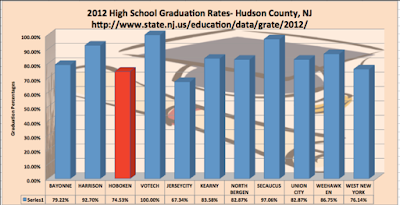 |
| My grammar school- Sadie F. Leinkaulf No.8 |
I formed active and collaborative partnerships with the Liberty Science Center, the New Jersey Commission on Holocaust Education, The National Center for History in the Schools, the Hoboken Historical Museum, National Geographic Geography Standards, The Presidential Library Project, the Hoboken Public Library, and Stevens Institute of Technology. Brought into the district Tools of the Mind, Read 180, SRI (online reading inventory).
I expanded the John Hopkins Program, revamped the Saturday U program, oversaw the writing and development of the state required technology plan for the district, led the QSAC effort in Instruction and Program, oversaw 8000+ hrs of professional development for 80 + district teachers, updated the public regularly on progress of curriculum, met regularly with the NJ Department of Education in Trenton to monitor curriculum progress, oversaw NCLB compliance, and brought LitLife into the district (early literacy program). I was part of the team that saw a complete overhaul on the Hoboken School District's Policy Manual.
Other activities included regular visits to each of the district schools, weekly meetings with supervisors and principals and I provided the Board of Education with curriculum development and implementation plan updates. I attempted to bring a dual language program to the Hoboken public schools- which eventually became the Hola Dual Language Charter School.
In addition, I also spoke about my work with the Hoboken Curriculum Project in presentations I gave at Harvard University, Rutgers University, The University of Michigan at Ann Arbor and the National Science Foundation.



















